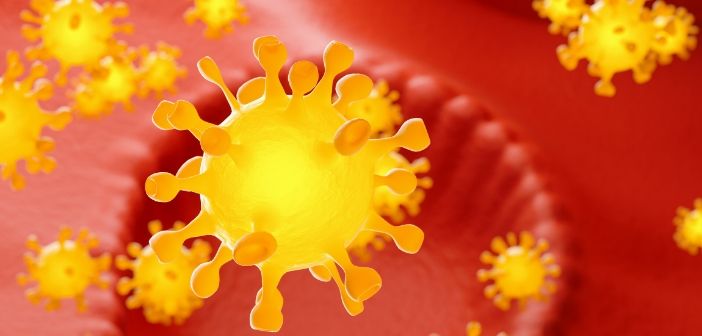Which cell types are infected by SARS-CoV-2?

Researchers at the Broad Institute of MIT and Harvard (MA, USA) have used existing data on RNA expression to identify which cell types express the two proteins that allow the SARS-CoV-2 virus to infect human cells. This discovery could potentially aid the development of novel and repurposed drug treatments to tackle the disease.
Previous studies have demonstrated that the viral spike protein of SARS-CoV-2 binds to a receptor protein termed angiotensin-converting enzyme 2 (ACE2), while another protein termed TMPRSS2 activates the viral spike protein, allowing the virus to enter and infect human cells.
Jose Ordovas-Montanes (Boston Children’s Hospital; MA USA) the second senior author of the study, explained: “as soon as we realized that the role of these proteins had been biochemically confirmed, we started looking to see where those genes were in our existing datasets. We were really in a good position to start to investigate which are the cells that this virus might actually target.”
In this study, published in Cell, the team performed large-scale studies of human, nonhuman primate and mouse cells located in the lungs, nasal passages and intestine, areas that virus is known to infect, and compared their results with cell types located in unaffected organs.
This research used single-cell RNA sequencing technology to determine which genes are activated in a given cell type. The RNA that is expressed in these two proteins was found to be expressed in goblet secretory cells from the nasal passages, type II pneumocytes from the lungs and absorptive enterocytes from the intestine.
“This may not be the full story, but it definitely paints a much more precise picture than where the field stood before. Now we can say with some level of confidence that these receptors are expressed on these specific cells in these tissues,” commented Ordovas-Montanes.
The researchers are building a database with partners at the Broad Institute to store these datasets, allowing other researchers to study the roles of different cell types in other infectious diseases.
Alex Shalek, first senior author of the study, explained: “because we have this incredible repository of information, we were able to begin to look at what would be likely target cells for infection. Even though these datasets weren’t designed specifically to study COVID, it’s hopefully given us a jump start on identifying some of the things that might be relevant there.”
The data also revealed that expression of the ACE2 gene correlated with the activation of genes that are turned on by an interferon produced in response to viral infection.
Upon this discovery, the researchers treated the cells lining the airway with interferon, and observed that the treatment of these proteins activated the ACE2 gene.
This suggests that the SARS-CoV-2 virus may have evolved to hijack proteins of the host cells’ immune defenses. However, interferon’s role in fighting the COVID-19 outbreak isn’t yet clear, as it is believed to provide additional receptors that help the virus infect human cells.
“It’s hard to make any broad conclusions about the role of interferon against this virus. The only way we’ll begin to understand that is through carefully controlled clinical trials. What we are trying to do is put information out there,” commented Shalek.
Shalek now hopes to utilize profile tissue models that incorporate the cell types identified in this study to test existing antiviral drugs and predict how they might affect SARS-CoV-2 infection.
Source: http://news.mit.edu/2020/researchers-cells-targeted-covid-19-0422